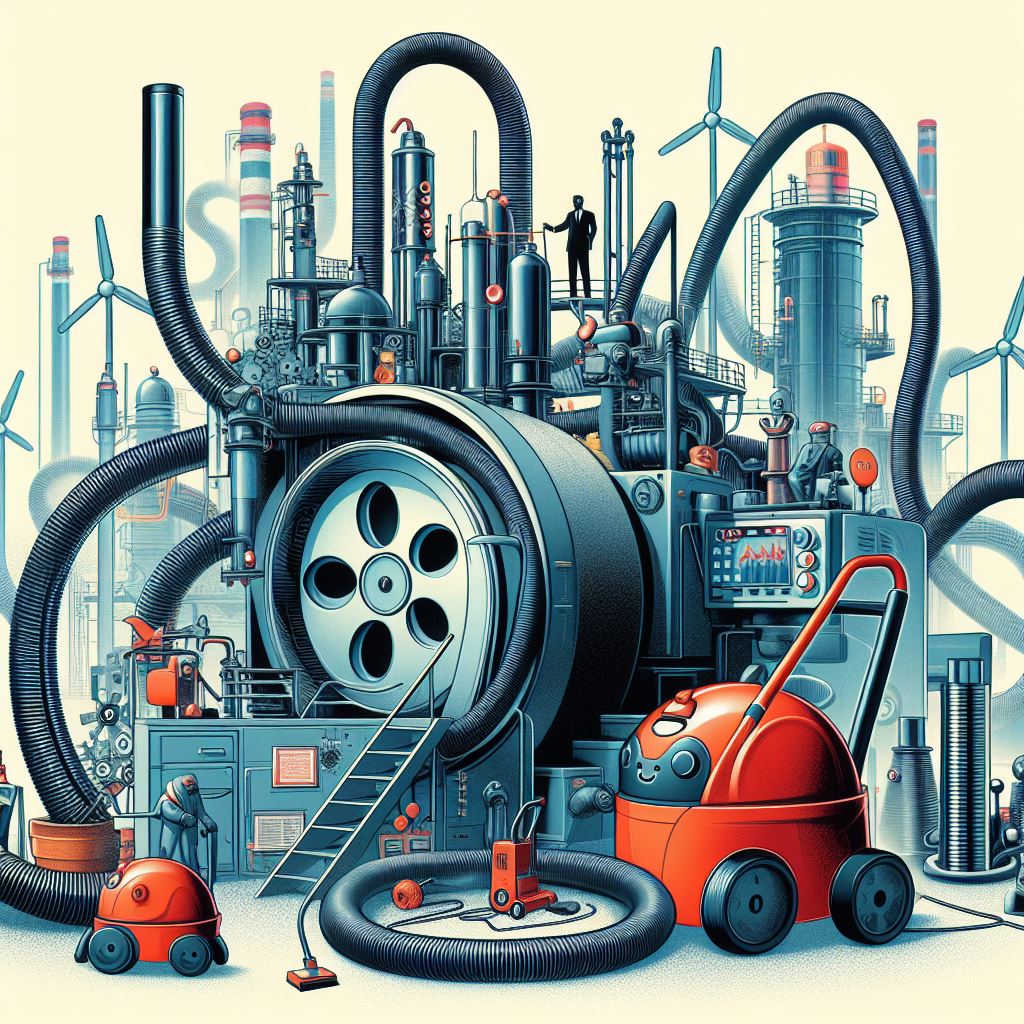Abstract:
This article explores the intricate relationship between various macroeconomic factors and the production of vacuum cleaners in India. As an emerging market with a rapidly evolving industrial sector, India presents a unique case for analyzing the influence of economic variables on specific industries, such as home appliance manufacturing
Contents:
- Introduction
- Overview of the Vacuum Cleaner Industry in India
- Macroeconomic Factors Influencing Production
- 3.1 Economic Growth and Consumer Demand
- 3.2 Inflation and Production Costs
- 3.3 Foreign Exchange Rates and Import-Export Dynamics
- 3.4 Government Policies and Regulatory Environment
- Challenges and Opportunities in the Indian Market
- Comparative Analysis with Other Emerging Economies
- Future Outlook and Predictions
- Conclusion
- FAQs
1. Introduction
India’s trajectory towards becoming an economic powerhouse has not only transformed its position on the global stage but also reshaped its internal market dynamics. This transformation is particularly evident in the home appliance sector, especially in the production of vacuum cleaners. In this context, understanding the interplay between India’s macroeconomic environment and the vacuum cleaner industry is crucial. This exploration offers insights into consumer behaviors, industry challenges, and the broader implications of economic policies on a seemingly niche market. The significance of this analysis lies in its ability to forecast industry trends, inform corporate strategies, and guide policy-making decisions in an economy that is rapidly integrating with global markets.

2. Overview of the Vacuum Cleaner Industry in India
The Indian vacuum cleaner market, once a nascent industry, has been witnessing a robust growth trajectory. This expansion can be attributed to several factors. First, the rise in urbanization has led to an increase in apartment living, where the convenience of using a vacuum cleaner over traditional cleaning methods is more pronounced. Second, there is a growing awareness and emphasis on hygiene and cleanliness, partly influenced by global health trends and increased exposure to global lifestyle standards. This shift is particularly noticeable in urban areas, where consumers are more likely to adopt modern cleaning tools.
Furthermore, the Indian vacuum cleaner market is characterized by its diversity in terms of product offerings. From handheld models catering to small households to high-end robotic vacuums for tech-savvy consumers, the market has a wide array of products. This diversity reflects the varied socio-economic segments present in India, from price-sensitive consumers to those seeking premium, feature-rich products.
Additionally, the entry of several international brands has spurred competition, leading to innovation and better product quality across the board. Local manufacturers are also stepping up, leveraging their understanding of the unique Indian consumer needs and preferences. This competition has not only improved product standards but also made vacuum cleaners more affordable and accessible to a larger segment of the population.
In summary, the vacuum cleaner industry in India is at a pivotal point, shaped by both global influences and local dynamics. Its growth is a mirror to the country’s economic and social transformations, making it a fascinating subject for macroeconomic analysis..
3. Macroeconomic Factors Influencing Production
3.1 Economic Growth and Consumer Demand: The rise in India’s GDP correlates with an increased
standard of living and disposable income. This economic upturn has made home appliances like vacuum cleaners more accessible to the middle class. The evolving consumer preferences towards convenient and efficient cleaning methods have also played a crucial role. Moreover, urbanization trends have led to smaller living spaces where compact and efficient cleaning tools, such as vacuum cleaners, are preferred.
3.2 Inflation and Production Costs: Inflation impacts the purchasing power of consumers and the cost structure for manufacturers.
High inflation can lead to increased costs for raw materials like plastics and metals, which are crucial in vacuum cleaner production. This scenario often forces manufacturers to make strategic decisions between absorbing these costs or passing them onto consumers, potentially affecting market demand.
3.3 Foreign Exchange Rates and Import-Export Dynamics:
The Indian Rupee’s fluctuation influences the cost of importing state-of-the-art technology and components from foreign markets. A stronger Rupee can make imports cheaper, aiding manufacturers in sourcing high-quality parts. Conversely, a weaker Rupee can boost exports but increase the cost of imported components, posing a challenge for manufacturers reliant on foreign parts.
3.4 Government Policies and Regulatory Environment:
Government initiatives like ‘Make in India’ have encouraged local manufacturing by providing subsidies and tax benefits. However, environmental regulations, such as those pertaining to energy efficiency and waste disposal, also necessitate additional investment from manufacturers to ensure compliance. These policies, while beneficial in the long run, may increase short-term operational costs.

4. Challenges and Opportunities in the Indian Market
Challenges: One of the primary challenges is the dominance of established global brands, which have a strong foothold in the Indian market. Additionally, logistical issues such as transportation and distribution in a geographically diverse country like India pose significant challenges. The diverse consumer base with varying preferences also demands a wide range of products, complicating inventory and production planning.
Opportunities: The burgeoning e-commerce sector in India offers a lucrative channel for vacuum cleaner sales, bypassing traditional retail constraints. Furthermore, the growing environmental consciousness among Indian consumers presents an opportunity for manufacturers to innovate with eco-friendly and energy-efficient models. Government initiatives promoting local manufacturing also open doors for new entrants and encourage existing players to expand their operations within India.
5. Future Outlook and Predictions
The future of vacuum cleaner production in India appears promising, with projections indicating continued growth in demand. Technological advancements, such as robotic and cordless vacuum cleaners, are expected to gain popularity. Additionally, the increasing focus on sustainability might drive innovation in eco-friendly designs and recycling initiatives. The market is also likely to witness heightened competition as more players enter, motivated by the supportive economic and policy environment.